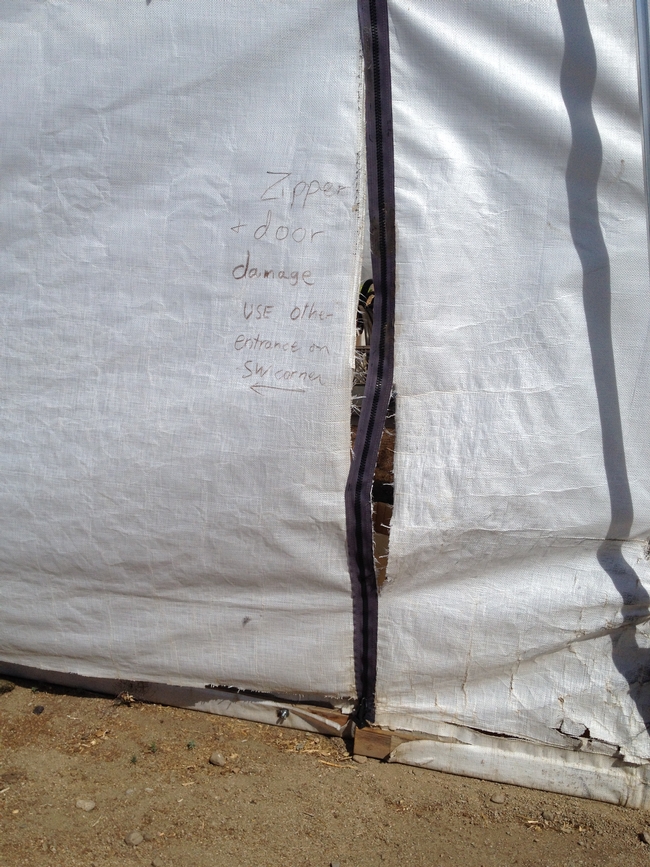High tunnels are a great addition to a production program in our climate as it enables earlier harvests for growers.
I haven't been here long enough to assess whether our intense light breaks down greenhouse films prematurely, but so far they seem to be holding up about as expected. Where I have seen problems has been in the end walls. At least a couple high tunnels have a woven-fiber end wall with zippers for access. It seems that this material, although stronger and more durable than the plastic greenhouse film, degrades faster than I expect it to.
At the high tunnel at the Independence Community Garden, the south-facing end wall has degraded to the point where it may not hold up another season. See the picture below for an example of how the material has broken at the zipper. The thread and zipper itself are in fine shape. It's the cloth that has failed.
I know the sunlight plays a role in the degradation. The north end wall gets more direct wind and is in very good condition. The south wall, facing the sun, is a disaster.
It probably would not be much of an issue but as you know we also have high winds that add considerable, frequent stress to the end walls.
The problem with film (or woven fabric) end walls is that unlike the covering, they can usually move in the wind. The long-term oscillation of the material structurally weakens it, much like what happens if you wiggle a paperclip for a couple minutes. Add UV degradation into the mix and you're likely to have a failure.
If you go the route of having a loose cover on the end walls, you should patch any holes immediately. A strong tape should work. I just patched the tunnel in Independence with Gorilla Tape which worked well where the tears weren't too bad. I expect that patching when the tears just begin (and not during a windstorm) would be more successful.
Anything that can help reduce flapping movement of the wall covering will be very beneficial.
Among the different designs in the Owens Valley, it appears that end walls framed in wood and covered with greenhouse film work best. Using a fixed panel like fiberglass or polycarbonate on the end walls would likely be even better if you are looking for long term .
The bottom line is try to prevent your coverings and end wall materials from flapping in the wind to extend their life and UV protected materials.
